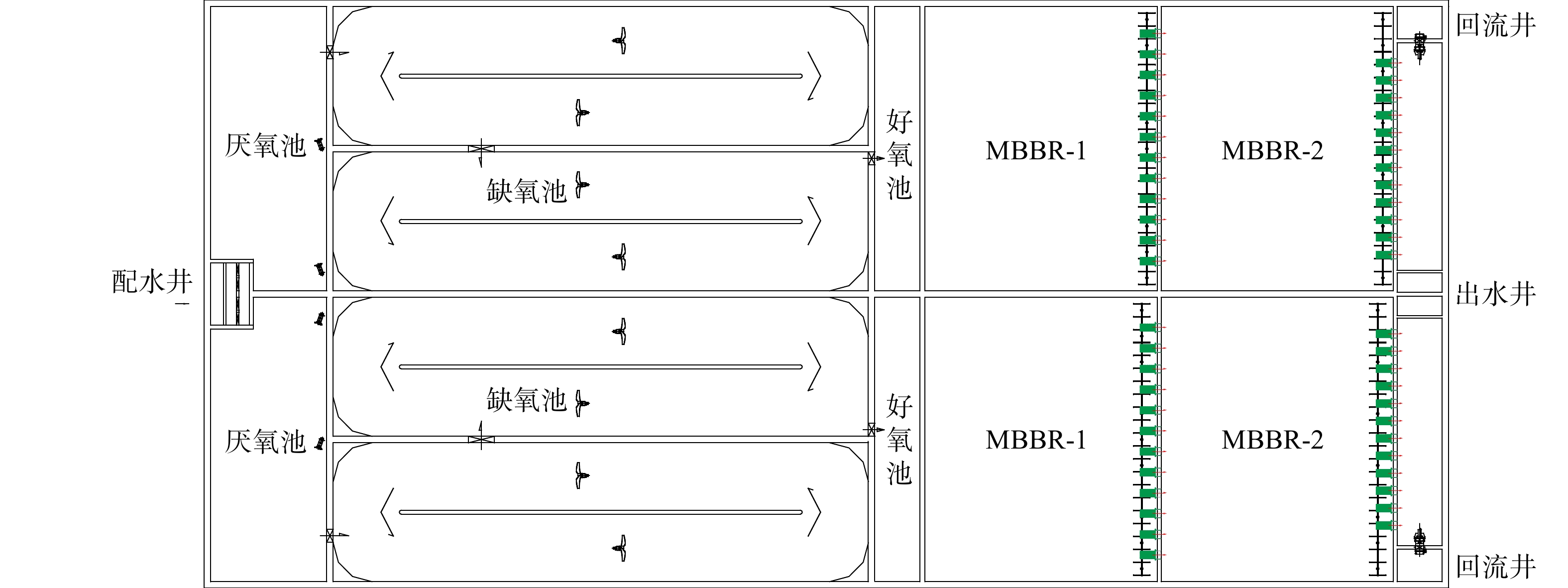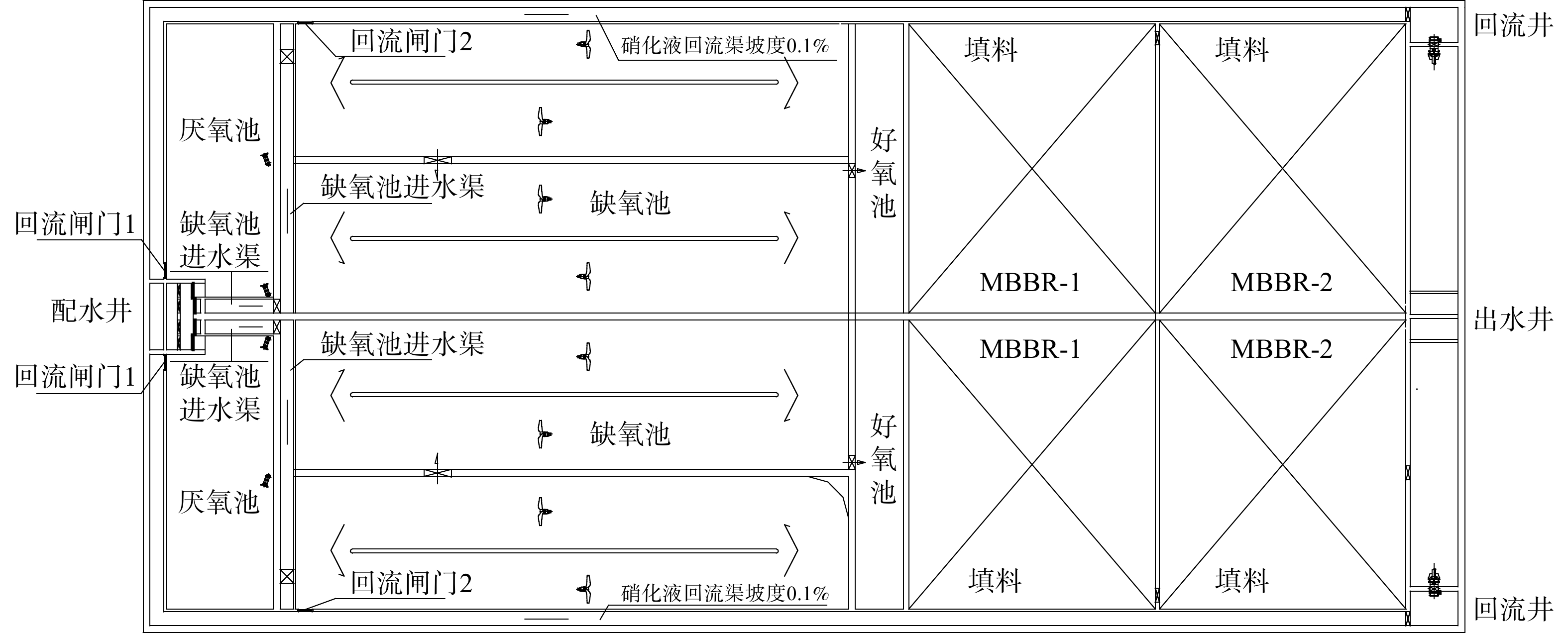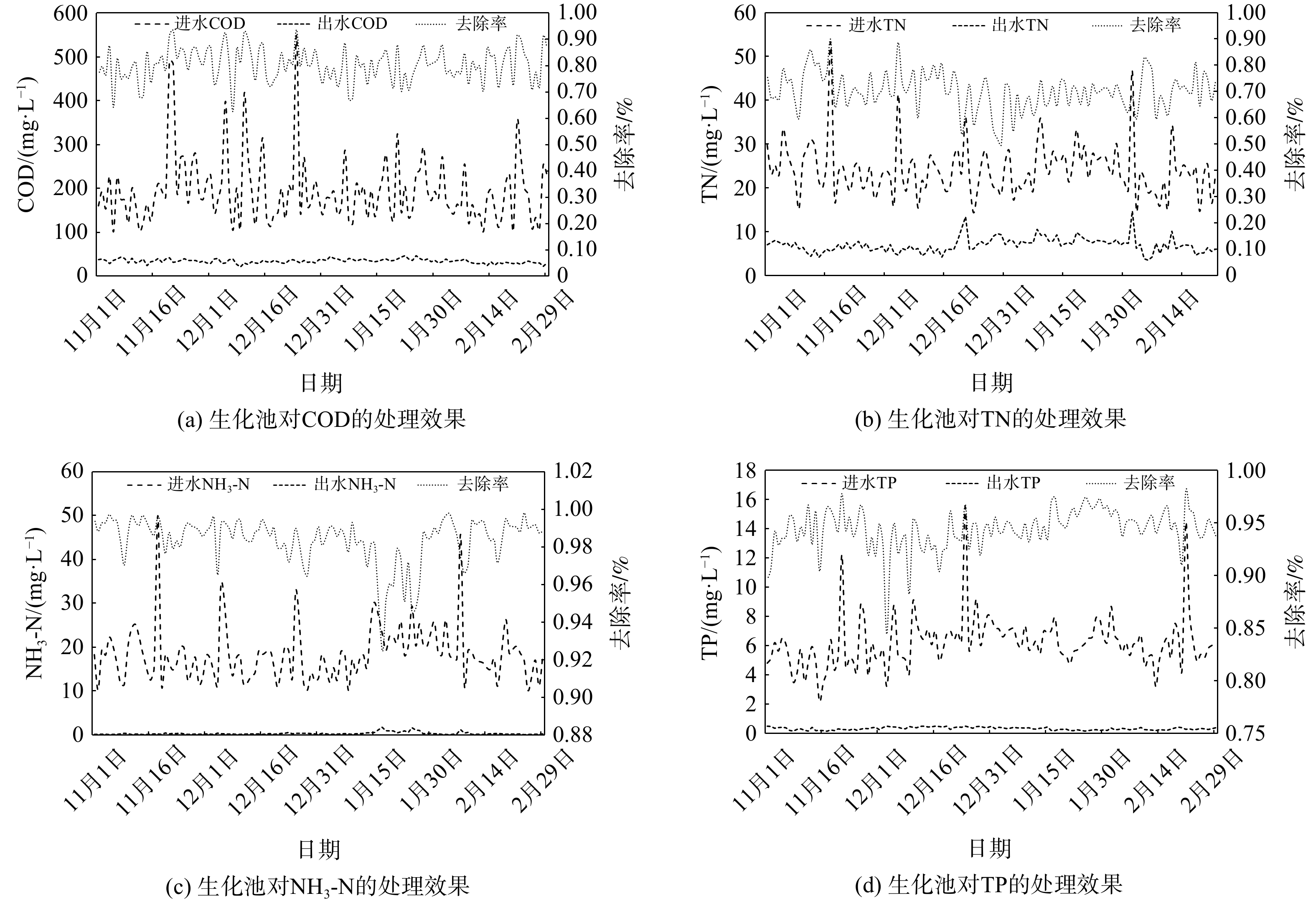锑的淡水沉积物质量基准初探
Preliminary Study of Antimony Freshwater Sediment Quality Criteria
-
摘要: 我国未建立锑(Sb)的淡水沉积物质量基准(freshwater sediment quality criteria,SQCfw)。锑的沉积物毒理学数据有限,本文通过分配实验获得宏观分配系数Km=165.22ρw-0.319,将锑在水中的浓度转化为锑在沉积物中的含量。在20个毒理学数据的基础上,采用物种敏感性分布法(species sensitivity distributions,SSD)并选取Logistic模型将其拟合,得到锑的SQCfw为37.80 mg·kg-1。本文同时为SQC的建立提供了基于生物毒性的方案。
-
关键词:
- 锑 /
- 物种敏感性分布法(SSD) /
- 淡水沉积物质量基准 /
- Logistic函数
Abstract: Freshwater sediment quality criteria of antimony (Sb) has not been established in China. Because of the limited toxicology data of antimony, the macroscopic partition coefficient was fitted by the sample points from Sb distribution experiment, and used for the conversion between the concentration of antimony in water and the content of antimony in sediments. Antimony SQCfw of 37.80 mg·kg-1 was derived by fitting the 20 toxicology data using species sensitivity distribution (SSD) method and Logistic function. This study provides a scheme based on biological toxicity for the establishment of SQC. -
城市污水活性污泥处理工艺的发展经历了漫长的发展过程,从开始的传统活性污泥工艺,发展到序批式活性污泥工艺及其衍生工艺(SBR、ICEAS、CASS、DAT-IAT、UNITANK、MSBR),以及改良的活性污泥法(A-B法、氧化沟)[1]。目前,业界提出了多种以活性污泥法为基础的、具有不同优良性能特点和功能的新工艺,如同步硝化-反硝化(SND)、氨厌氧氧化(ANAMMOX)、短程硝化-反硝化、移动床生物膜反应器(MBBR)、膜生物反应器(MBR)等工艺[2-3]。
随着国家对环境保护要求的不断提高,对城市污水处理厂出水水质(尤其是氮和磷含量)的要求也越来越严格[4],污水处理工艺也相应发生变化,由应用较多的改良活性污泥工艺转变为MBBR[5]和MBR工艺。孙逊等[6]在山东济宁市采用MBBR工艺进行强化脱氮除磷中试实验,获得了成功,为污水处理厂改造提供了重要参考。该MBBR工艺不仅在无锡芦村污水处理厂升级改造中得到了全面认可[7-8],而且在青岛市李村河污水处理厂[9]、团岛污水处理厂[10]升级改造中均得到采用。这些实例表明,MBBR工艺不仅可以显著提高污水处理系统的硝化能力,而且均具有一定的抗冲击负荷能力;尤其在冬季低温时对氨氮有较高的去除效果,可以保证氨氮的稳定达标[8]。
2017年以前,宁夏回族自治区现有污水处理厂大部分采用改良的活性污泥法,出水水质大都执行《城镇污水处理厂污染物排放标准》(GB 18918-2002)的一级B或二级标准。根据《水污染防治计划》和《宁夏回族自治区城镇污水处理及再生利用设施建设“十三五”规划》,“十三五”期间,必须对未达到一级A排放标准的污水处理设施进行提标改造,并要求新建污水处理厂出水水质全部执行一级A标准。2015—2016年,宁夏回族自治区采用MBBR工艺进行提标改造的污水处理厂主要有吴忠市第一、第二、第三污水处理厂,石嘴山市第一污水处理厂,中卫市城市污水处理厂,西吉县污水处理厂等。上述污水处理厂自改造完成后,出水水质均已稳定达到一级A标准。
本文以吴忠市第三污水处理厂扩建工程为案例,探讨和验证了MBBR工艺的应用效果。从设计水质出发,探讨了工艺流程及主要构筑物参数的合理确定问题,并总结分析了该工程的主要设计特点及运行效果,以期为相关地区城市污水处理厂提标改造及扩建工程提供参考。
1. 工程及工艺流程概况
吴忠市第三污水处理厂现有处理规模为2×104m³·d−1,采用百乐克工艺,出水水质执行一级B标准。2015年采用MBBR工艺进行提标改造,出水执行一级A标准,目前稳定运行。本次扩建工程设计规模为3×104m³·d−1,扩建完成后该污水处理厂总处理规模达到5×104 m³·d−1。扩建工程设计出水执行《城镇污水处理厂污染物排放标准》(GB 18918-2002)的一级A标准,采用“MBBR+沉淀+滤布滤池”组合工艺,尾水经消毒后部分回用,其余尾水达标排放。
根据吴忠市第三污水处理厂多年运行中的实际进水水质,确定本扩建工程的进水水质设计值如表1所示,出水执行《城镇污水处理厂污染物排放标准》(GB 18918-2002)的一级A标准。
表 1 设计进水与出水水质指标Table 1. Designed influent and effluent qualitymg·L-1 进水或出水 COD BOD5 SS NH3-N TN TP 进水 550 230 300 45 65 6 出水 ≤50 ≤10 ≤10 ≤5(8) ≤15 ≤0.5 注:括号外数值为水温>12℃时的控制指标,括号内数值为水温≤12 ℃时的控制指标。 根据进水水质设计值和出水排放标准,本扩建工程所采用的污水处理工艺不仅具有去除有机污染物和悬浮固体的效果,重点还应具有同步脱氮除磷的功能。吴忠市第三污水处理厂多年实际运行数据表明,COD和BOD5一直稳定达标,氨氮、总氮及总磷出水浓度波动较大。因此,本扩建工程与多数污水处理厂面临的问题一样,即主要解决氮磷稳定达标排放问题[11]。由于该污水处理厂进水总氮较高,C/N比较低,反硝化缺乏碳源,故考虑外加碳源,并加大缺氧区容积,以保证总氮稳定达标。总磷去除率目标确定为91.7%,此目标仅依生化法是很难达到的,因此,需要采用以生化法为主、化学法为辅的方式来保证达到出水要求。通过设置滤布滤池,一方面可实现悬浮物的稳定达标,另一方面也可保障出水COD和总磷达标。综上所述,确定污水处理工艺流程见图1。
2. 主要构筑物设计和工程特点
2.1 MBBR反应池设计特点
MBBR反应池是整个污水处理厂的核心构筑物,其运行情况直接影响污水处理厂的出水水质。MBBR工艺以悬浮填料为微生物提供生长载体,通过悬浮填料的充分流化,实现污水的高效处理[1]。该工艺充分汲取了生物接触氧化及生物流化床的优点,克服了其传质效率低、处理效率差、流化动力高等缺点。本扩建工程将MBBR与A2/O相结合,工艺运行方式集生物膜工艺和活性污泥工艺的优点于一体。设置MBBR反应池1座2组,采用钢筋混凝土结构。单池有效容积11 437 m³,总平面长、宽、高(净尺寸)分别为95.5、44.5、6.3 m,超高0.8 m。池容划分为厌氧区、缺氧区和好氧区(投加填料)分别为1.8、8.3和8.8 h。设计参数见表2,池型见图2和图3。
表 2 MBBR池设计参数Table 2. Design parameters of the MBBR unit需硝化的氮/(mg·L−1) 需反硝化的氮/(mg·L−1) 有效水深/m 污泥浓度/(mg·L−1) 总回流比 气量/(m3·h−1) 好氧区有效生物膜面积/m2 总停留时间/h 48.5 38.5 5.7 4 000 250%~400% 12 028 1.54×106 18.9 根据进水水质情况及出水水质要求,TN去除率需达77%。为此,缺氧区停留时间设计为8.3 h。好氧区的池容与缺氧池基本相同。在好氧区内投加生物悬浮填料,填料规格为:直径25 mm,厚度10 mm,比表面积620 m²·m−³。填料填充率为22%;设计污泥负荷(以单位MLSS所含BOD5计)为0.07 kg·(kg·d)−1;硝化液回流比为250%~400%;污泥回流比为50%~100%。
本扩建工程生化池设计参考UCT工艺在污水处理工程设计中的应用[12],借鉴郭姣等[13]关于进水方式与比例对UCT工艺脱氮除磷效果的影响的研究结果,即外回流100%、内回流200%时,多点进水的同时脱氮除磷效果明显优于单点进水。为此,本工程采用多点进水、多点回流的设计。缺氧池和厌氧池均设置进水闸门,可实现进水比例的灵活调节;好氧池硝化液回流采用渠道回流,分别回流至缺氧池和厌氧池,可实现多点回流(见图3);通过闸门可以灵活控制进水及回流的流量比例。
2.2 其他处理单元的设计参数
除了核心处理单元——MBBR生化池,其他均为常规工艺,预处理为粗细格栅间、提升泵及沉砂池(为了防止拦截桶堵塞,细格栅采用内进水孔板细格栅),沉淀采用中进周出辐流式沉淀池,深度处理采用滤布滤池,鼓风机采用空气悬浮风机(自带变频,调节曝气量灵活方便,可节约能耗),污泥脱水采用离心脱水机,具体设计参数详见表3。
表 3 处理单元设计参数Table 3. Design parameters of the treatment units处理单元 设计参数 粗细格栅间、提升泵房及沉砂池 粗格栅2套,采用回转式机械粗格栅,栅宽1.2 m,栅条间隙20 mm,安装角度70°; 潜污泵4台(3用1备),单台流量600 m·h−1,扬程15 m,功率45 kW,变频控制; 细格栅2套,采用内进水孔板细格栅,渠道宽1.4 m,孔径3 mm,安装角度90°; 旋流沉砂池2座,池内径3.05 m,旋流沉砂设备2套,砂水分离器1台。 MBBR反应池 厌氧区:潜水搅拌器5台(4用1备),叶轮直径400 mm,转速980 r·min−1,功率4 kW; 缺氧区:低速推流器9台(8用1备),叶轮直径2 000 mm,转速42 r·min−1,功率6.5 kW; 好氧区:管式微孔曝气器2772套,规格:DN65、长度1.0 m、EPDM材质;拦截筒48个,规格:直径600 mm,长度1 200 mm、材质SS304;穿墙回流泵3台(2用1备),规格:流量520 L·s−1,叶轮直径600 mm,功率7.5 kW。 二沉池 辐流式沉淀池2座,直径30 m,表面负荷0.88 m·m−·h−1,有效水深为4 m。 深度处理车间 采用滤布滤池,平均滤速4.17 m·h−1,峰值滤速≤6.25 m·h−1,吸洗耗水率≤1%~3%。320 m过滤面积;反冲洗系统2套,反洗水泵流量54 m·h−1,扬程17 m,功率3.7 kW。 曝气系统 空气悬浮风机3台(2用1备),变频控制,流量101 m·min−1,压力 80 kPa,功率190 kW。 加药系统 除磷药剂:聚合氯化铝;外加碳源:乙酸钠;消毒药剂:次氯酸钠。 接触池及计量渠 有效容积700 m3,加氯量12 mg· L−1,不锈钢巴氏计量装置一套,喉宽0.5 m。 污泥处理系统 储泥池1座,有效容积250 m,双曲面搅拌机1台,功率2.2 kW; 离心式脱水机2台(1用1备),处理能力25~30 m·h−1,工作时间24 h·d−1。 2.3 工程的设计特点
1)本扩建工程工艺与原厂提标改造工艺保持一致,仍采用MBBR工艺,并将好氧池分为2段,每段均设置拦截筒和填料投加,根据水质水量变化情况灵活调节填料投加区域和投加比,以保证出水稳定达标。
2)为了减少MBBR池拦截筒的堵塞,采用内进水孔板细格栅代替常用的回转式细格栅或者转鼓式格栅。
3)采用缺氧池和厌氧池2处进水、2处回流等优化措施,实现了生物降解功能的强化,保证了系统运行的安全性和稳定性。
4)设置了化学除磷和碳源投加装置,可针对水质情况灵活选择是否投加药剂,运行管理方便灵活,处理效果更稳定。
3. 工程的运行效果
吴忠市第三污水处理厂扩建工程于2019年4月建成投入使用,运行1 a以来,水量从50%增加至80%,最大日处理量达到100%;进水水质除TP外其他指标均低于设计浓度,尤其TN和NH3-N浓度偏低;出水水质一直稳定达到一级A标准。2019年11月至2020年2月整个冬季运行效果如图4所示,其中水温为10~14 ℃,水质指标为出水指标。
从整体看,本扩建工程主要出水水质指标均稳定满足一级A标准要求,COD和TN出水平均值分别为34.5和7.0 mg·L−1,最大值为46.7和14.7 mg·L−1;NH3-N和TP去除率平均值分别为98.4%和94.3%,最大值为1.0和0.5 mg·L−1。从图4可看出,进水TP浓度均值为6.3 mg·L−1,超过设计最大值,而出水全部达标,且除磷药剂投加量极少。分析其原因,主要是在发现进水TN浓度较低时调整了运行工况,采取了以除磷为主以脱氮为辅的策略,增加了厌氧段的硝化液回流量及缺氧段的进水量,形成了类似倒置A2O的运行模式,从而强化了脱氮除磷效果。
进水水质除TP外的其他指标较设计浓度低,但整体进水指标波动不小,而出水基本不受影响,稳定达标,说明MBBR工艺抗冲击负荷能力非常强。
4. 结论
1)本扩建工程采用内进水孔板细格栅代替常规机械格栅,可减少MBBR池拦截筒的堵塞,增加运行的稳定性;采用空气悬浮风机,自带变频控制,可实现曝气量的灵活调节及能耗的降低。
2) UCT工艺及其改良工艺具有灵活改变污水运行模式的特点。根据进水水质的特点,调整脱氮/除磷的主次地位,可加强生化系统的脱氮/除磷效率,且可减少外加碳源及除磷药剂的投加量。
3)进水水质的波动对出水指标影响较小,说明MBBR工艺抗冲击负荷能力强。
4) MBBR和UCT的结合工艺适用于生活污水处理厂。
-
Krenev V A, Dergacheva N P, Fomichev S V. Antimony:Resources, application fields, and world market[J]. Theoretical Foundations of Chemical Engineering, 2015, 49(5):769-772 Li J, Zheng B, He Y, et al. Antimony contamination, consequences and removal techniques:A review[J]. Ecotoxicology and Environmental Safety, 2018, 156:125-134 Herath I, Vithanage M, Bundschuh J. Antimony as a global dilemma:Geochemistry, mobility, fate and transport[J]. Environmental Pollution, 2017, 223:545-559 向猛, 黄益宗, 蔡立群, 等. 外源钙对两种价态锑胁迫下水稻幼苗吸收积累锑和钙的影响[J]. 生态毒理学报, 2015, 10(3):153-160 Xiang M, Huang Y Z, Cai L Q, et al. Effect of calcium on uptake and acumulation of antimony and calcium by rice seedling in solution culture[J]. Asian Journal of Ecotoxicology, 2015, 10(3):153-160(in Chinese)
He M, Wang X, Wu F, et al. Antimony pollution in China[J]. Science of the Total Environment, 2012, 421-422(3):41-50 王漫漫, 陆昊, 李慧明, 等. 太湖流域典型河流重金属污染和生态风险评估[J]. 环境化学, 2016, 35(10):2025-2035 Wang M M, Lu H, Li H M, et al. Pollution level and ecological risk assessment of heavy metals in typical rivers of Taihu basin[J]Environmental Chemistry, 2016, 35(10):2025-2035(in Chinese)
Li X, Yang H, Zhang C, et al. Spatial distribution and transport characteristics of heavy metals around an antimony mine area in central China[J]. Chemosphere, 2017, 170:17-24 宁增平, 肖青相, 蓝小龙, 等. 都柳江水系沉积物锑等重金属空间分布特征及生态风险[J]. 环境科学, 2017, 38(7):2784-2792 Ning Z P, Xiao Q X, Lan X L, et al. Spatial distribution characteristics and potential ecological risk of antimony and selected heavy metals in sediments of Duliujiang River[J]. Environmental Science, 2017, 38(7):2784-2792(in Chinese)
Wang X, He M, Xi J, et al. Antimony distribution and mobility in rivers around the world's largest antimony mine of Xikuangshan, Hunan Province, China[J]. Microchemical Journal, 2011, 97(1):4-11 Mandal S K, Majumder N, Chowdhury C, et al. Effect of pH and salinity on sorption of antimony (Ⅲ and Ⅴ) on mangrove sediment, Sundarban, India[J]. Soil & Sediment Contamination, 2017, 26(4):1-12 Yang H, He M. Distribution and speciation of selenium, antimony, and arsenic in soils and sediments around the area of Xikuangshan (China)[J]. CLEAN-Soil, Air, Water, 2016, 44(11):1538-1546 田大勇, 常琛朝, 王成志, 等. 环境中重金属和有机污染物的物种敏感性分布研究进展[J]. 生态毒理学报, 2015, 10(3):38-49 Tian D Y, Chang C C, Wang C Z, et al. Review of species sensitivity distributions for heavy metals and organic contaminants[J]. Asian Journal of Ecotoxicology, 2015, 10(3):38-49(in Chinese)
Posthuma L, Zwart D D. Species Sensitivity Distributions[M]//Encyclopedia of Toxicology. Amsterdam:Elsevier, 2014:363-368 Leung K M Y, Anders B R, Gray J S, et al. Deriving sediment quality guidelines from field-based species sensitivity distributions[J]. Environmental Science & Technology, 2005, 39(14):5148-5156 Gao P, Li Z, Gibson M, et al. Ecological risk assessment of nonylphenol in coastal waters of China based on species sensitivity distribution model[J]. Chemosphere, 2014, 104(3):113-119 刘亚莉, 谢玉为, 张效伟, 等. 应用物种敏感性分布评价敌敌畏对淡水生物的生态风险[J]. 生态毒理学报, 2016, 11(2):531-538 Liu Y L, Xie Y W, Zhang X W, et al. Assessing ecological risks of dichlorvos to freshwater organisms by species sensitivity distribution[J]. Asian Journal of Ecotoxicology, 2016, 11(2):531-538(in Chinese)
孙在金, 赵淑婷, 林祥龙, 等. 基于物种敏感度分布法建立中国土壤中锑的环境基准[J]. 环境科学研究, 2018, 31(4):774-781 Sun Z J, Zhao S T, Lin X L, et al. Deriving soils environmental criteria of antimony in China by species sensitivity distributions[J]. Research of Environmental Sciences, 2018, 31(4):774-781(in Chinese)
钟文珏, 曾毅, 祝凌燕. 水体沉积物质量基准研究现状[J]. 生态毒理学报, 2013, 8(3):285-294 Zhong W J, Zeng Y, Zhu L Y. Current research status of sediment quality criteria[J]. Asian Journal of Ecotoxicology, 2013, 8(3):285-294(in Chinese)
陈心悦, 张彦峰, 沈兆爽, 等. 中国七大水系淡水沉积物中林丹(γ-HCH)的生态风险评估[J]. 生态毒理学报, 2018, 13(3):103-111 Chen X Y, Zhang Y F, Shen Z S, et al. Ecological risk assessment of γ-HCH for freshwater sediment of seven major river systems in China[J]. Asian Journal of Ecotoxicology, 2018, 13(3):103-111(in Chinese)
Long E R, Morgan L G. Potential for biological effects of sediment-sorbed contaminants tested in the National Status and Trends program. Technical memo[R]. Rockville:National Oceanic & Atmospheric Admininistration, 1990 McCready S, Birch G F, Long E R, et al. An evaluation of Australian sediment quality guidelines[J]. Archives of Environmental Contamination & Toxicology, 2006, 50(3):306-315 金相灿. 沉积物污染化学[M]. 北京:中国环境科学出版社, 1992:135 Jin X C. Sediment Contamination Chemistry[M]. Beijing:China Environmental Science Press, 1992:135(in Chinese) Obiakor M O, Tighe M, Wang Z, et al. The relative sensitivity of freshwater species to antimony(Ⅲ):Implications for water quality guidelines and ecological risk assessments[J]. Environmental Science & Pollution Research International, 2017, 24(32):25276-25290 Wheeler J R, Grist E P M, Leung K M Y, et al. Species sensitivity distributions:Data and model choice[J]. Marine Pollution Bulletin, 2002, 45(1):192-202 王小庆, 韦东普, 黄占斌. 物种敏感性分布法在土壤中铜生态阈值建立中的应用研究[J]. 环境科学学报, 2013, 33(6):1787-1794 Wang X Q, Wei D P, Huang Z B, et al. Application of species sensitivity distribution in deriving of ecological thresholds for copper in soils[J]. Acta Scientiae Circumstantiae, 2013, 33(6):1787-1794(in Chinese)
Keating K A, Cherry S. Use and interpretation of Logistic regression in habitat-selection studies[J]. Journal of Wildlife Management, 2011, 68(4):774-789 Silva P V, Silva A R R, Mendo S, et al. Toxicity of tributyltin (TBT) to terrestrial organisms and its species sensitivity distribution[J]. Science of the Total Environment, 2014, 466-467(1):1037-1046 李雪华, 徐鹏, 李俊青. 污染河流沉积物锑释放规律的研究[J]. 北京工业大学学报, 2013(5):785-791 Li X H, Xu P, Li J Q. Antimony release from the sediments of the antimony-polluted river[J]. Journal of Beijing University of Technology, 2013 (5):785-791(in Chinese)
Borgmann U, Couillard Y, Doyle P, et al. Toxicity of sixty-three metals and metalloids to Hyalella azteca at two levels of water hardness[J]. Environmental Toxicology & Chemistry, 2010, 24(3):641-652 Nan S H, Yang C Y, An Y J. Effects of antimony on aquatic organisms (larva and embryo of Oryzias latipes, Moina macrocopa, Simocephalus mixtus, and Pseudokirchneriella subcapitata)[J]. Chemosphere, 2009, 75(7):889-893 Díaz S, Villares R, Vázquez M D, et al. Physiological effects of exposure to arsenic, mercury, antimony and selenium in the aquatic moss Fontinalis antipyretica Hedw.[J]. Water Air & Soil Pollution, 2013, 224(8):1659 Yang J L. Comparative acute toxicity of gallium(Ⅲ), antimony(Ⅲ), indium(Ⅲ), cadmium(Ⅱ), and copper(Ⅱ) on freshwater swamp shrimp (Macrobrachium nipponense)[J]. Biological Research, 2014, 47(1):1-4 Yang J L, Chen L H. Toxicity of antimony, gallium, and indium toward a teleost model and a native fish species of semiconductor manufacturing districts of Taiwan[J]. Journal of Elementology, 2018, 23(1):191-199 Yang J L, Chen L H, Chen H C. Effects of SbCl3 on aquatic organism:Acute test, serum metabolic enzyme activities, and blood cell deformation[J]. Environmental Science:An Indian Journal, 2007, 2(1):53-58 Heitmuller P T, Hollister T A, Parrish P R. Acute toxicity of 54 industrial chemicals to sheepshead minnows (Cyprinodon variegatus)[J]. Bulletin of Environmental Contamination & Toxicology, 1981, 27(5):596-604 Ohio Environmental Protection Agency (Ohio EPA). Surface Water Quality Criterion Fast Sheet[R]. Columbus, Ohio:Ohio EPA, 2006 Williams P L, Dusenbery D B. Aquatic toxicity testing using the nematode, Caenorhabditis elegans[J]. Environmental Toxicology & Chemistry, 2010, 9(10):1285-1290 Lin H C, Hwang P P. Acute and chronic effects of antimony chloride (SbCl3) on tilapia (Oreochromis mossambicus) larvae[J]. Bulletin of Environmental Contamination & Toxicology, 1998, 61(1):129-134 Kitamura H. Relation between the toxicity of some toxicants to the aquatic animals (Tanichthys albonubes and Neocaridina denticulata) and the hardness of the test solution[J]. Bulletin of the Faculty of Fisheries Nagasaki University, 1990, 67:13-19 熊旭, 刘燕群, 叶超, 等. 三氯化锑对泥鳅的毒性效应[J]. 环境与健康杂志, 2014, 31(6):534-535 Xiong X, Liu Y Q, Ye C, et al. Toxic effects of antimony trichloride on loach[J]. Journal of Environment and Health, 2014, 31(6):534-535(in Chinese)
Xu F L, Li Y L, Wang Y, et al. Key issues for the development and application of the species sensitivity distribution (SSD) model for ecological risk assessment[J]. Ecological Indicators, 2015, 54(3):227-237 赵佳懿, 杜建国, 陈彬, 等. 应用物种敏感性分布评估九龙江口水体重金属生态风险[J]. 生态学杂志, 2014, 33(2):400-407 Zhao J Y, Du J G, Chen B, et al. Assessing ecological risks of heavy metals to marine organisms in the Jiulongjiang Estuary by species sensitivity distribution[J]. Chinese Journal of Ecology, 2014, 33(2):400-407(in Chinese)
Xu L, Wu F, Jian Z, et al. Sediment records of Sb and Pb stable isotopic ratios in Lake Qinghai[J]. Microchemical Journal, 2011, 97(1):25-29 卢莎莎, 顾尚义, 韩露, 等. 都柳江水体-沉积物间锑的迁移转化规律[J]. 贵州大学学报:自然版, 2013, 30(3):131-136 Lu S S, Gu S Y, Han L, et al. Migration and transformation of antimony between water and sediment in Duliujiang River[J]. Journal of Guizhou University:Natural Sciences, 2013, 30(3):131-136(in Chinese)
王茜, 刘永侠, 庄文, 等. 南四湖表层沉积物中铍、锑、铊的地球化学特征与环境风险[J]. 环境科学学报, 2018, 38(5):1968-1982 Wang Q, Liu Y X, Zhuang W, et al. Research on geochemical characteristics and environmental risk of Be, Sb and Ti in surface sediments of the Nansihu[J]. Acta Scientiae Circumstantiae, 2018, 38(5):1968-1982(in Chinese)
高阳俊, 耿春女, 曹勇. 基于三种污染危害评价方法的上海市郊区河网底泥重金属评价[J]. 环境工程, 2015, 33(10):121-125 Gao Y J, Gen C N, Cao Y. Three assessment methods on heavy metals contamination in river sediments of Shanghai suburban area[J]. Environmental Engineering, 2015, 33(10):121-125(in Chinese)
-

 点击查看大图
点击查看大图
计量
- 文章访问数: 2163
- HTML全文浏览数: 2163
- PDF下载数: 38
- 施引文献: 0



 DownLoad:
DownLoad:




